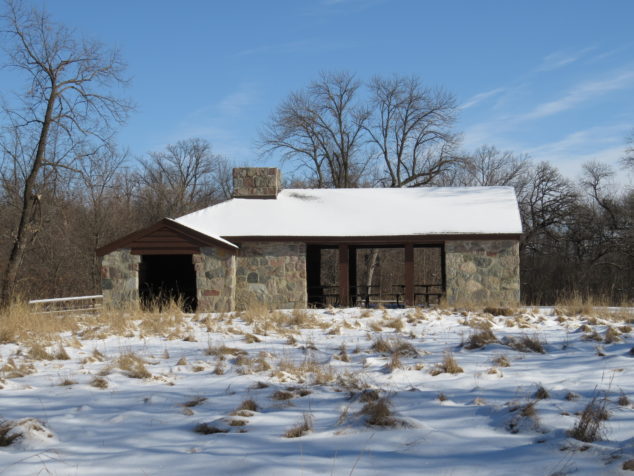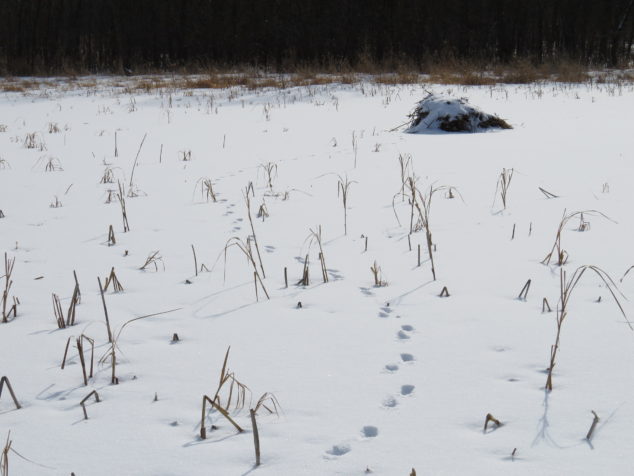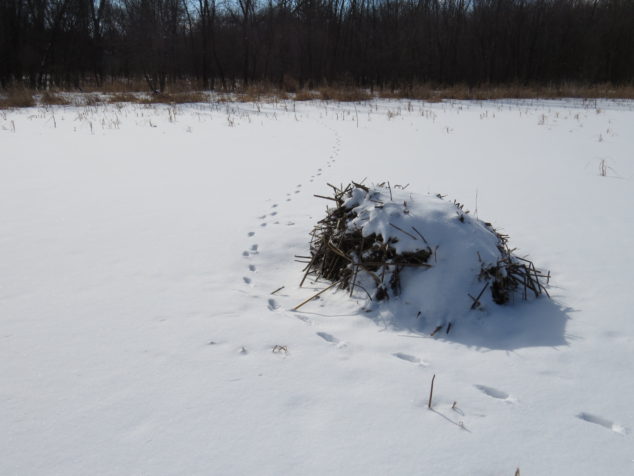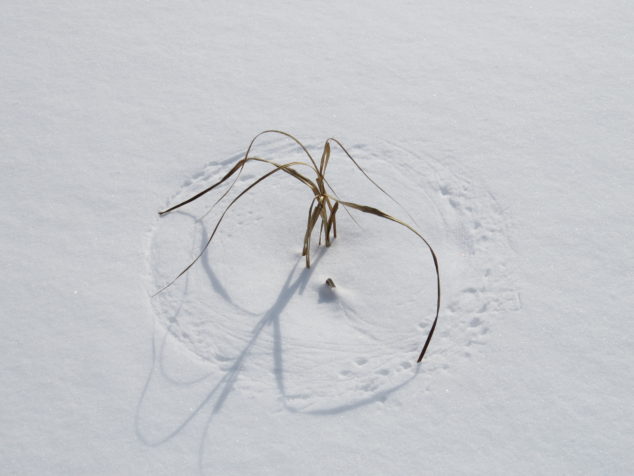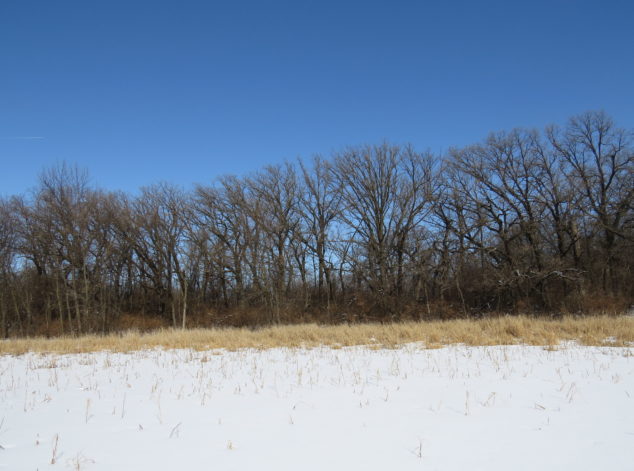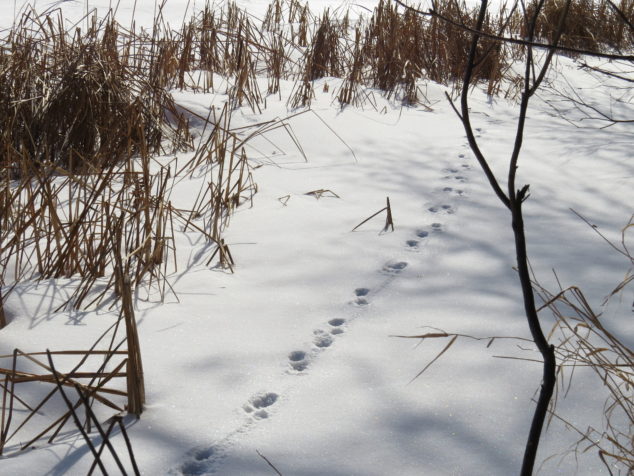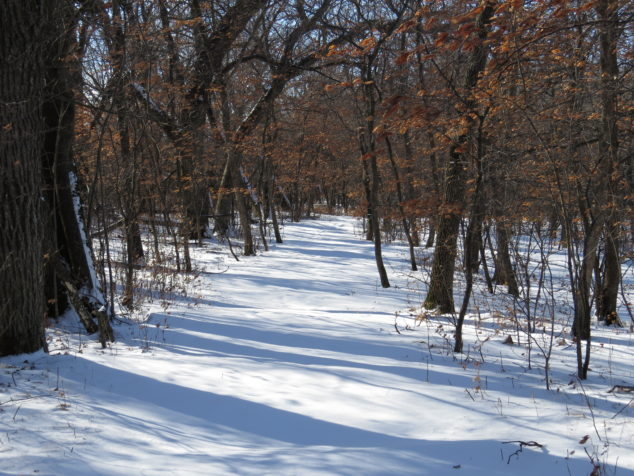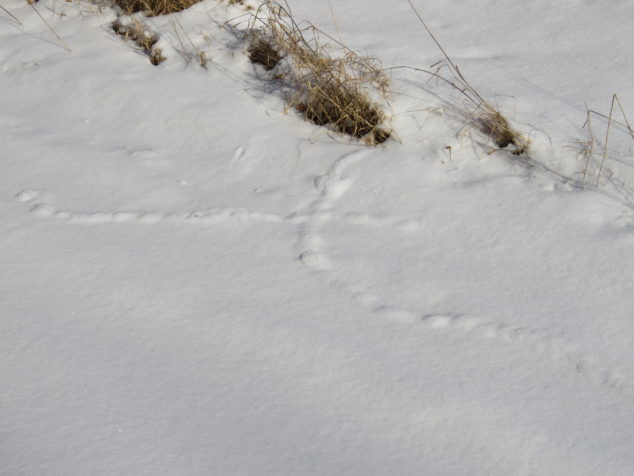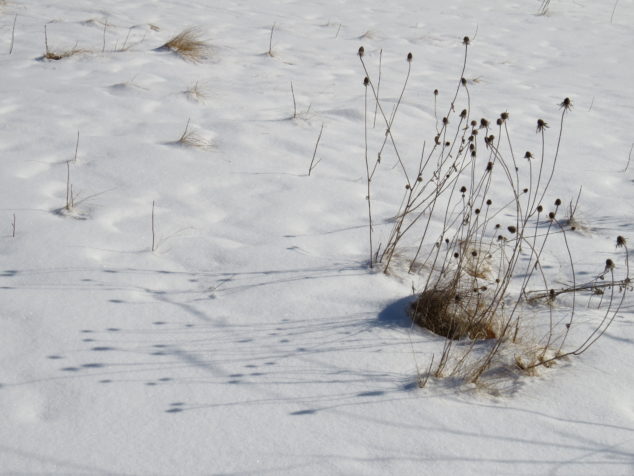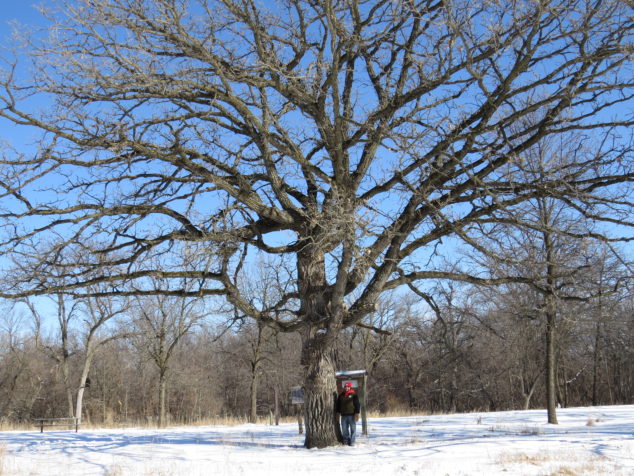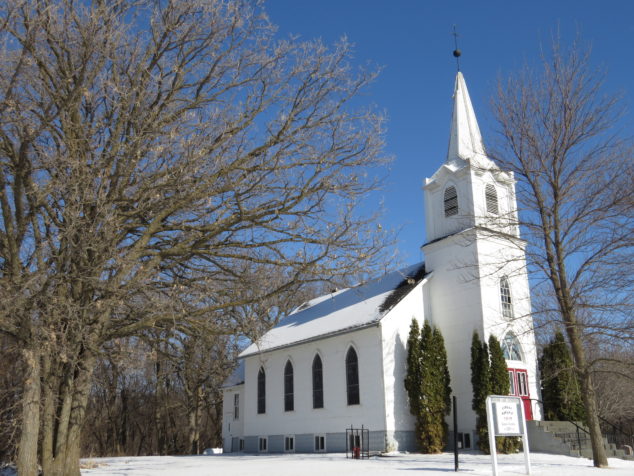We decided it was time for some Winter hiking. Beautiful blue skies accompanied the single digit high-for-the-day temperature. We drove to a small state park west of us that we had never been to, traveling by snow-covered fields and signs for rural Lutheran churches. The roads leading up to the entrance and throughout Monson Lake State Park weren’t plowed, so we guessed on the parking at the office building where I found an outside box with maps of the park. We were the only ones there. Next to the office building was an historic site sign, and as we read it, we both had a dark, sinking feeling, like watching horrid news on TV that you should turn off but you keep watching. On this site on August 20, 1862, thirteen Swedish settlers living on the edge of the frontier were killed by native Dakota Indians who had been displaced from their traditional homelands, placed on reservations, and who endured broken treaties and increasing hunger and hardships. The park was established in 1923 as a memorial to the Broberg and Lundborg families who lost their lives on that day. Usch då.
In the late 1930’s, two buildings were constructed in the new park by the Veterans’ Conservation Corps—a picnic pavilion and cooking area and a restroom—using local granite and white oak timbers.
After a stop at the very cold outhouse, we walked the one-mile hiking trail. In the middle of a frozen slough we saw a muskrat house and followed the tracks that led to it. The new snow was fine and powdery and had blown into the prints, so it was hard to tell who made them.
But as we got closer, we realized the trekking critter was also just checking out the house and moving on.
A wind-made sundial was etched into the snow beside the muskrat house, marking the Winter sun’s path to the Spring Equinox.
From the center of the ice- and snow-covered slough we looked back on the Oaks and Basswoods that lined the hiking trail.
We hiked along West Sunburg Lake where the wind had made stripes of snow and ice. The sun was warm on our faces.
We saw what looked like coyote tracks on a food-finding mission at the edge of the lake.
After making a hairpin turn in the trail on the narrow isthmus between two lakes, we faced Monson Lake and the wrath of a northwest wind.
The trail was covered in drifts, and Ironwood understory trees, with their rusty leaves, chattered in the wind. The frigid, relentless wind pulled tears from my eyes, hurt my cheeks, and froze my breath. It felt like we were at a different place on a different day.
We hurried back to the picnic area that was sheltered from the wind and where once again, the sun warmed us. We saw little vole tracks under the snow…
…and coneflower shadows stretching in the low-slung midday sun.
We celebrated the old beauty Bur Oak tree that spread across the blue sky.
As one of Minnesota’s smallest state parks, it is largely unchanged since its establishment. It is easy to see why it was a desirable location for the Dakota people for millennia and for the Swedish immigrants over 150 years ago. On the edge of the park in a small rectangle of land carved out from the park border is a little white Lutheran church and cemetery. Some of the graves date back to the late 1800’s, and the words are engraved in Swedish.
The wrath of the northwest wind coming off Monson Lake tells the story of pain and suffering of Native and Immigrant people. History is buried under the soil, under the water, and under the snow. I like that the little Lutheran church sits so close to the memorial park where the homes of the Dakotas and settlers once stood. I like how prayers are said every Sunday morning at 9:30 with coffee and fellowship following the service. I like how the Swedish words are etched in stone. I like how the cross and steeple track the Winter sun’s path year after year, decade after decade, stretching Grace and Spring’s Hope out to all who enter these gates. Life is hard. May you walk in Peace, may you celebrate Beauty, and may Love warm your face and heart. Gud välsigne dig.
